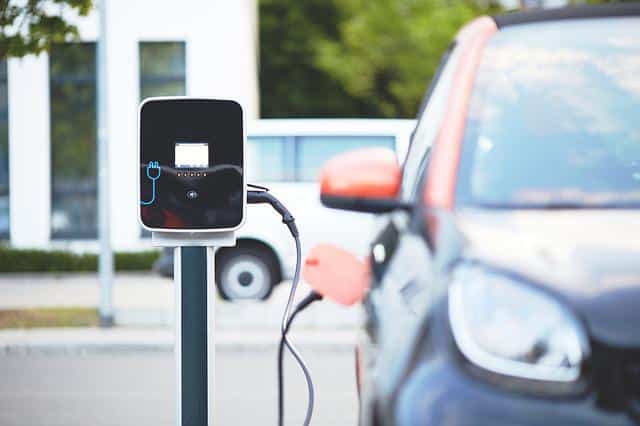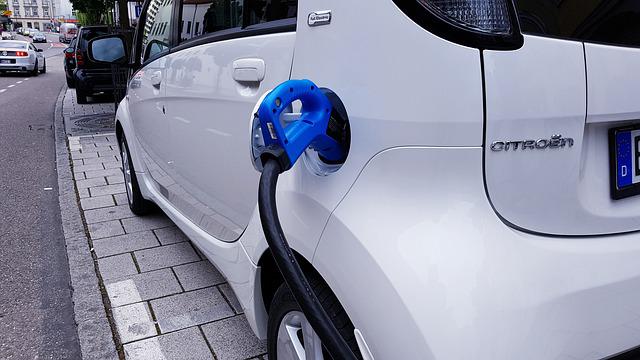Short Answer – Yes, DC Fast Charging is Slightly Worse for Battery Life
Is DC fast charging bad for battery? The short answer is yes, DC Fast Charging is slightly worse for your battery’s capacity. Controlled tests show a slight difference. The long answer is more complicated.
A car battery charged exclusively by DC will have 70% of its original capacity by 50,000 miles. In contrast, a car charged exclusively by AC will have 75% of its original capacity by 50,000 miles. Therefore at 50,000 miles of use, there’s a small 3-5% difference in capacity change between exclusively AC charged and exclusively DC charged batteries in controlled tests. However that difference is dwarfed by the overall drop of both by 25% capacity over 50,000 miles.
We note also that over time the differences will become bigger so that at the end of life the two hypothetical car batteries would exhibit a 9-15% difference in capacity. But that’s only if you exclusively charge with DC! Real world use its hard to imagine only charging AC or DC. We expect a mix of AC vs DC charging, and therefore the real world differences due to the DC induced degradation will be less than the 9-15% range.
Read on to find out more.

Introduction – DC Fast Charging for EVs
Level 3 DC fast charging can charge your electric car to full range in 30 minutes. This is much faster than traditional charging methods, which can take up to hours . EV automakers are now offering DC fast charging as an option on some models, and many public charging stations are beginning to offer this service. In fact, DC fast charging is advocated by EV companies to be the future of all electric vehicles, to narrow the gap between internal combustion fueling times (minutes) and charging by electricity (hours).
Drivers worry that DC fast charging may be bad for their car battery. There used to be anecdotal evidence to suggest this might be the case. Limited studies have shown that lithium-ion batteries degrade quickly when they are charged frequently at high speeds. The implication is that your battery will not last as long if you use a DC fast charger compared to a traditional charger. Let’s take a look at real data for a definitive answer!
Controlled Test of AC vs DC Conducted at Idaho National Lab (INL) in 2015
A controlled test was carried out by researchers at Idaho National Lab (INL) in Idaho in 2015. The INL is a government funded research organization that is part of the US Department of Energy (DOE). The researcher engineers Matthew Shirk from INL itself and Jeffrey Wishart from Intertek Testing, a British testing firm, acquired 4 cars. For two of the cars, they charged exclusively with AC. For the other two, they charged exclusively with DC. They drove the cars a total of 50,000 miles. Every 10,000 miles they measured the capacity, temperature, discharge rate and other features of the battery. At 50,000 miles, they measured the total capacity of the AC vs DC batteries one last time.
Astute readers will wonder if test results in 2015 hold true for battery technology today. This is a good point. Battery technology continues to improve and it may be that the differential of AC vs DC are muted by advances.
With that caveat in mind, lets take a look at the results of the capacity over time are shown below.
Controlled Tests Reveal DC Charging Degrades Car Battery Slightly Faster than AC

The results of the controlled test was very interesting (chart above). First, both batteries experienced significant degradation. Now you know that your car battery, even after moderate use of 50,000 miles, will experience about 25% degradation in capacity regardless whether its AC or DC charged. Second, the DC fast charged batteries indeed degraded faster, but with a small difference at 50,000 miles that we would say it’s really negligible early in the life of the car. Other factors like the temperature of the climate, the way the car is used and charged daily, may have more impact on this tiny difference.
Differences Will Magnify Over Time

Most interesting is that the difference started to be observable at around 30,000 miles (above). Let’s extrapolate out to the life of the car. The NHTSA estimates that cars last 150,000 miles and most EV manufacturers have said that their batteries will last longer. So we expect that at 3 times the 50,000 miles conditions of the experiment, that the difference will be magnified 3 times. Therefore, at the end of life of the AC vs DC charged cars, the difference would be 9-15%.
We can get very concrete about the differences magnifying over time. AC-exclusive cars would have 75% of original capacity at 50,000 miles, which translates to 225 miles range if the original range was 300 miles (a good range for electric cars in 2022). DC-exclusive cars would have 70% of original range, which translates to 210 miles. So the DC-exclusive car has 15 miles less range after 50,000 miles. After 150,000 miles, that difference will get magnified to about 45 miles. Remember, both car batteries will be pretty severely degraded by that point.
Battery Technology Continues to Improve
However, it is important to remember that battery technology continues to improve. It’s hard to say whether the results of all this testing hold true against the wonderful innovation coming out of the electric car companies.
Basics About Different Levels Of Electric Vehicle (EV) DC Chargers
There must be a connection between the charger and the onboard charger to charge an electric vehicle (EV). The different levels of EV chargers refer to the maximum rate at which the charger can deliver power to the onboard charger. The inefficiency of charging at lower levels means it takes much longer to charge an EV when using a Level 1 or 2 charger than a Level 3 charger. The time required to fully charge an EV also depends on the size of its battery. A larger battery will require more time to charge than a smaller battery. The following is a breakdown of the different levels of EV DC chargers, from slowest to fastest:
Level 1: 120 volt AC, 8-16 amps – up to 2 miles of range per hour of charging
Level 2: 208-240 volt AC, 16-60 amps – up to 25 miles of range per hour of charging
Level 3 (DC Fast Charging): 240-480 volt AC, 60-250 amps – up to 250 miles of range per hour of charging*
*Note: Most EVs on the market today cannot utilize the full potential of Level 3 DC fast charging and will charge at a slower rate when connected to a Level 3 charger.
How Does DC Fast Charging Work For Car Battery?
For those of you who don’t know DC fast charging, let’s go into a bit of detail. Regarding electric cars, there are two main types of charging: AC and DC. AC, or alternating current, is the power that comes out of your typical outlets at home. DC, or direct current, is the type of power that comes from batteries. For an electric car to charge, the DC power from the battery needs to be converted into AC power. This is done by rectification, which uses a series of diodes to convert the DC power into AC power.
AC charging is more common than DC charging because it is easier to supply AC power to homes and businesses than DC power. However, there are some advantages to DC charging. One advantage is that it can charge an electric car much faster than AC. DC fast charging can add about 60 miles of range in just 3 minutes. This is possible because DC fast chargers supply a higher electrical voltage than AC chargers.
If you’re interested in trying out DC fast charging for yourself, there are a few things you need to keep in mind. First, not all electric cars are compatible with all types of chargers. You’ll need to ensure that your car can connect to the specific charger you’re using. Second, you’ll need access to a high-voltage outlet; most public chargers use between 240 and 480 volts.
And finally, you’ll need to be prepared to pay a bit more for DC fast charging; public chargers typically cost about $0.25 per kilowatt-hour, while home chargers can cost around $0.15 per kilowatt-hour. But if you’re looking for a quicker way to recharge your electric car’s batteries, DC fast charging might be right.

How To Limit Your DC Fast Charging?
While it’s great that your electric vehicle (EV) can charge quickly at a DC fast-charging station, you may be wondering how to limit your DC fast charging. After all, you don’t want to overcharge your battery and shorten its lifespan. Fortunately, you can take a few simple steps to limit your DC fast charging.
First, check your owner’s manual or the manufacturer’s website to find your vehicle’s maximum charge rate. This will ensure that you don’t exceed the recommendations and damage your battery. Second, set a timer for your charger so that it automatically shuts off after a certain amount of time.
This will prevent you from accidentally leaving your charger on for too long. Finally, unplug your charger once the charging process is complete. By taking these simple steps, you can help extend the life of your battery and keep your EV running smoothly for years to come.
Wrapping Up
In conclusion, DC fast charging is a great way to recharge your electric car’s battery quickly. However, it’s important to limit your DC fast charging to prolong the life of your battery. By following the tips above, you can ensure you get the most out of your charger and keep your EV running like new.
You can also read:
What Is The Best Apartment Heating System? Top 5
Automate Hot Water Baseboard Heat with Programmable Thermostats
10 Solar System Benefits That Change The Way You Live
Can You Run A Fridge On Solar Power?

Anne Lauer
Anna Lauer is a writer, gardener, and homesteader living in rural Wisconsin. She has written for Mother Earth News, Grit, and Hobby Farms magazines. Anna is writing a new book about growing your food for free and an ultimate guide to producing food at little to no cost. When she’s not writing or gardening, Anna enjoys spending time with her husband and two young daughters.
